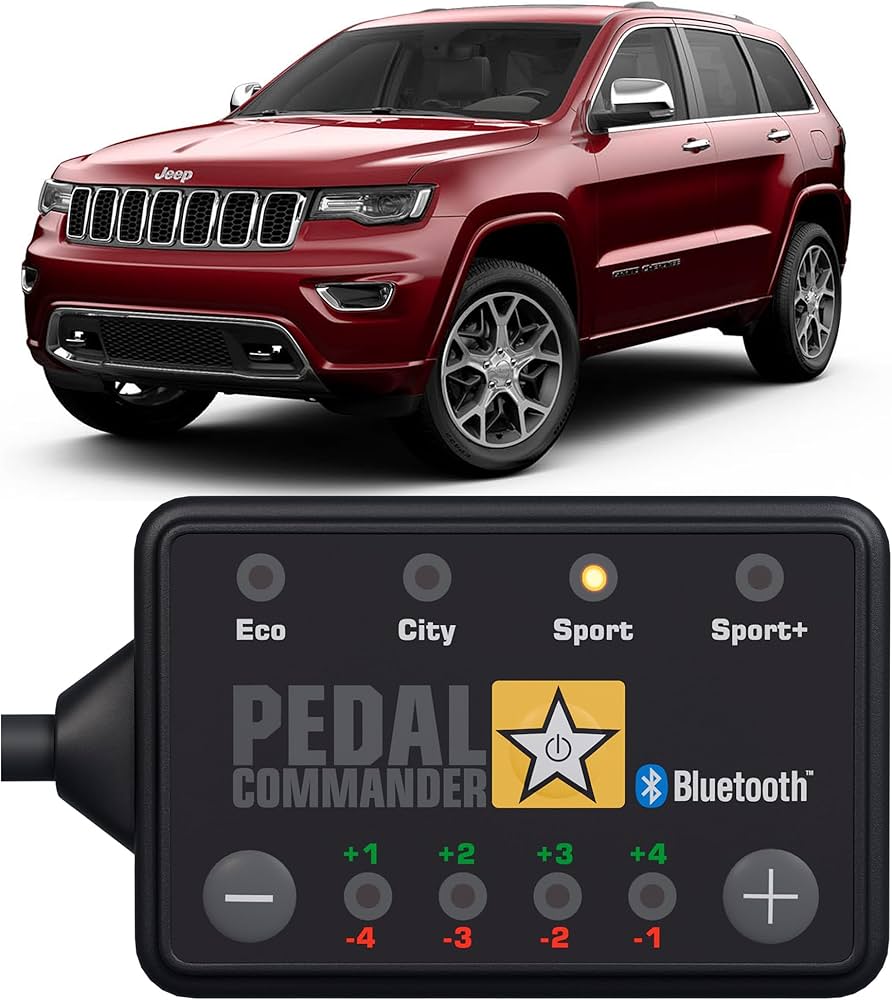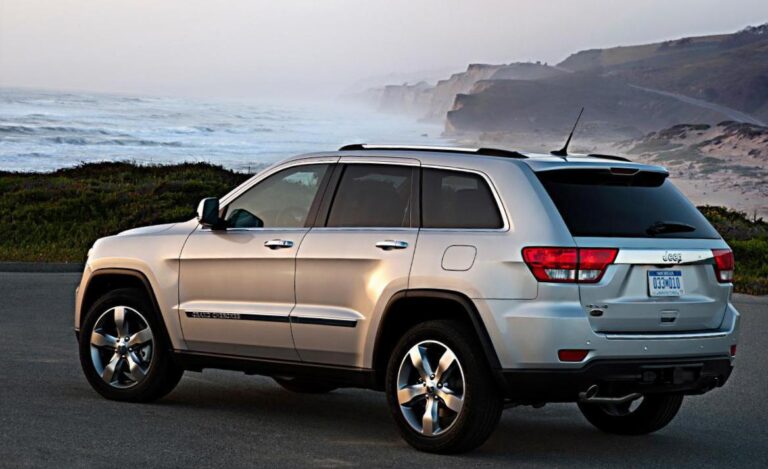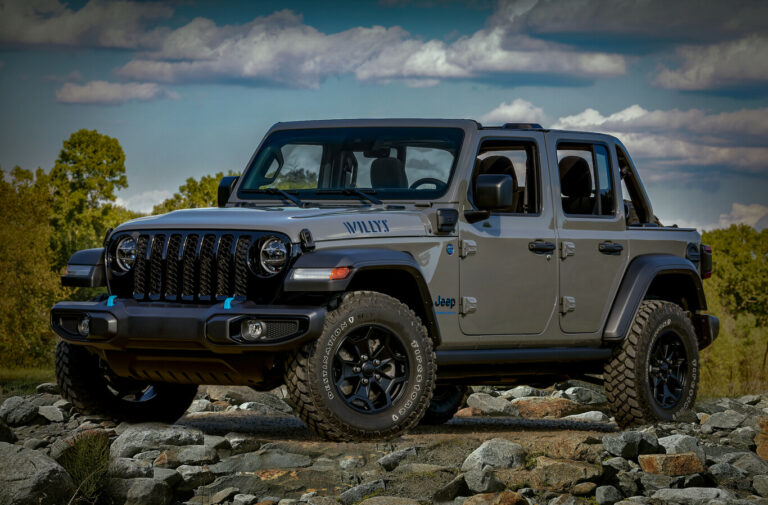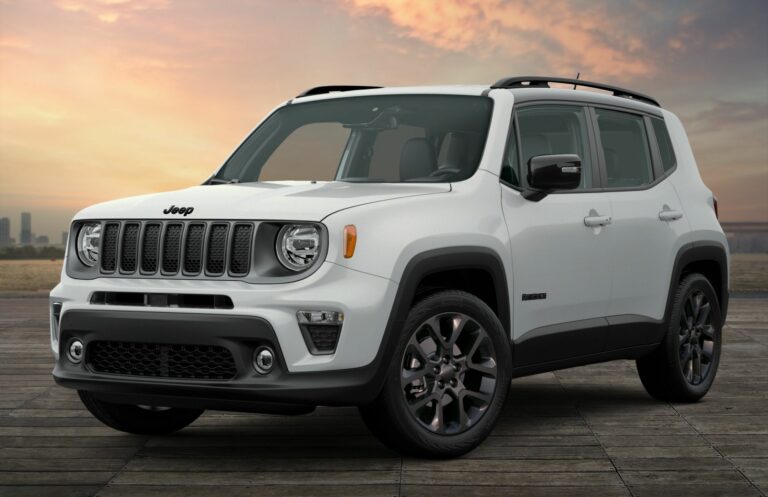How Much Horsepower Does A Jeep Grand Cherokee SRT Have: Unpacking the Beast Within
How Much Horsepower Does A Jeep Grand Cherokee SRT Have: Unpacking the Beast Within jeeps.truckstrend.com
The Jeep Grand Cherokee SRT is not just another SUV; it’s a high-performance anomaly, a muscular titan that seamlessly blends family-hauling utility with sports-car-rivaling acceleration. For enthusiasts and prospective buyers alike, one question often sits at the forefront of their minds: "How much horsepower does a Jeep Grand Cherokee SRT have?" This question isn’t just about a number; it’s about understanding the heart of this formidable machine, its capabilities, and what makes it such a unique proposition in the automotive landscape.
Horsepower, in essence, is a measure of an engine’s power output – how quickly it can do work. In the context of the Grand Cherokee SRT, it’s the raw, unadulterated force that propels this substantial vehicle from a standstill to blistering speeds, offering an exhilarating driving experience unlike any other SUV. Understanding this figure is crucial to appreciating the SRT’s engineering prowess, its performance credentials, and its distinctive character. This comprehensive guide will delve deep into the horsepower figures, their implications, and everything else you need to know about the power lurking beneath the hood of a Jeep Grand Cherokee SRT.
How Much Horsepower Does A Jeep Grand Cherokee SRT Have: Unpacking the Beast Within
Understanding the SRT Lineage and Its Power Plants
To fully grasp the horsepower figures, it’s essential to understand the evolution of the Grand Cherokee SRT. The "SRT" designation stands for "Street and Racing Technology," Chrysler’s high-performance division responsible for transforming ordinary vehicles into extraordinary powerhouses. The Grand Cherokee SRT first burst onto the scene in the mid-2000s, immediately setting a new benchmark for performance SUVs.
Over its production run, the Grand Cherokee SRT primarily utilized two powerful naturally aspirated HEMI V8 engines, though the most prominent and widely recognized for the "SRT" badging is the 6.4-liter variant.
- Early Models (2006-2010): The first generation of the Grand Cherokee SRT (WK generation) was powered by a 6.1-liter HEMI V8 engine. This initial iteration set the stage, delivering a robust 420 horsepower and 420 lb-ft of torque. It was a groundbreaking vehicle for its time, proving that an SUV could genuinely be a performance machine.
- Later Models (2012-2021): The second and more widely recognized generation of the Grand Cherokee SRT (WK2 generation) saw a significant bump in displacement and power. This is where the true beast emerged, featuring the mighty 6.4-liter (392 cubic inch) HEMI V8 engine. This engine became the hallmark of the Grand Cherokee SRT, delivering substantial power and torque figures that cemented its legendary status.
It’s important to distinguish the Grand Cherokee SRT from its even more potent sibling, the Grand Cherokee Trackhawk, which we will clarify later. For the purpose of this article, when we refer to the "Grand Cherokee SRT," we are primarily focusing on the models equipped with the 6.4-liter HEMI V8.

The Heart of the Beast: Horsepower and Torque Specifications (6.4L HEMI)
The 6.4-liter HEMI V8 engine is the undisputed star of the Grand Cherokee SRT, providing the prodigious power that defines its character.
- Horsepower: The Jeep Grand Cherokee SRT, equipped with the 6.4-liter HEMI V8, produces 470 horsepower in its initial WK2 iterations (2012-2017) and was later bumped to 475 horsepower for the 2018 model year and onwards, through its discontinuation. This slight increase reflected continuous refinements and tuning improvements.
- Torque: Equally important as horsepower is torque, which measures the twisting force an engine produces. The 6.4L HEMI in the SRT generates 465 lb-ft of torque. This immense torque is crucial for off-the-line acceleration and provides that immediate, seat-of-your-pants thrust.

How These Figures Translate to Performance:
These numbers aren’t just statistics; they translate into real-world, breathtaking performance:
- 0-60 mph: The Grand Cherokee SRT can sprint from 0 to 60 mph in a blistering 4.4 to 4.5 seconds. This places it firmly in the territory of many high-performance sports cars, a truly astonishing feat for a vehicle weighing over 5,000 pounds.
- Quarter Mile: It can complete the quarter-mile in the high 12-second range, often around 12.9 seconds, at trap speeds exceeding 100 mph.
- Top Speed: The top speed is electronically limited, typically around 160 mph.
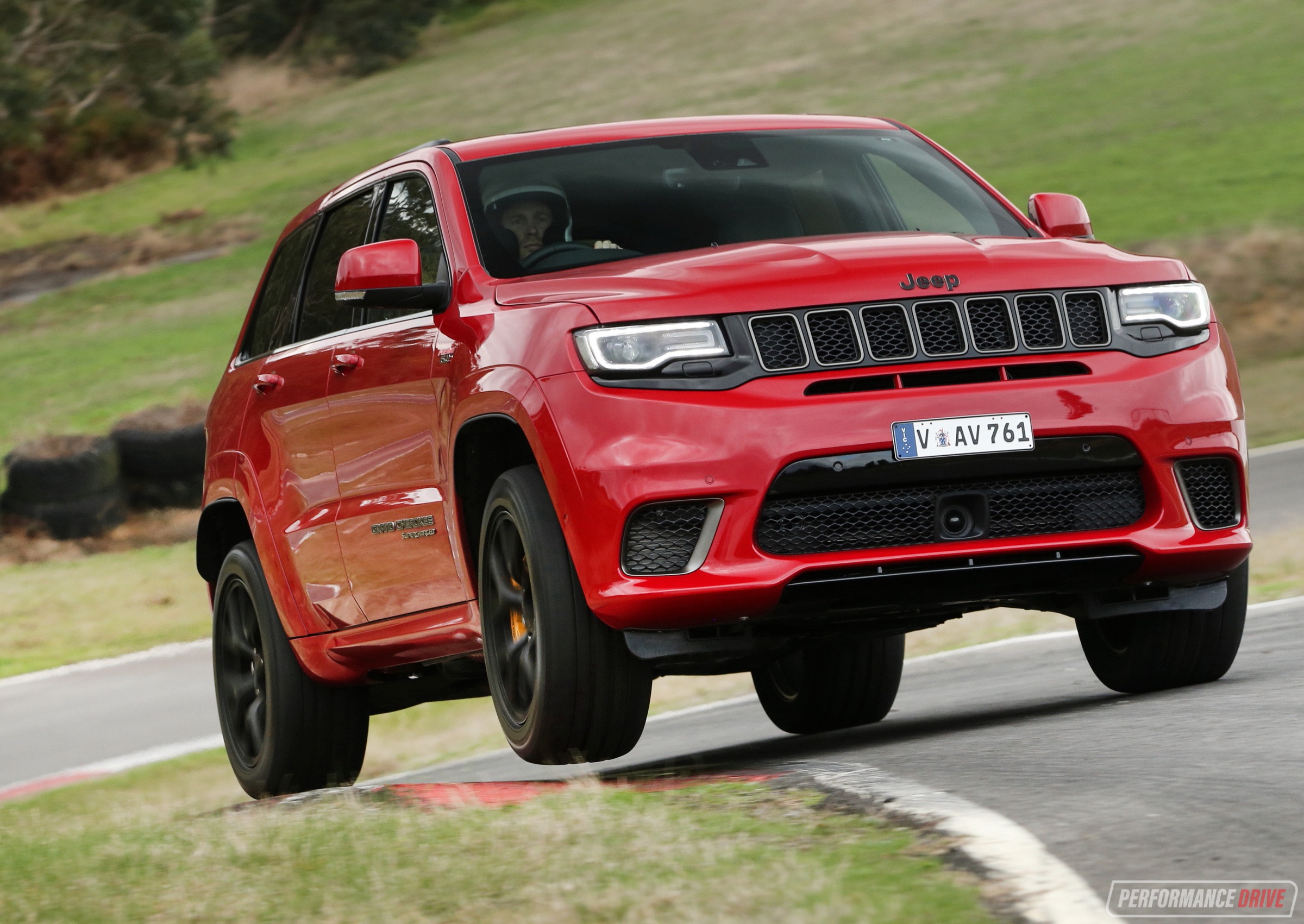
Benefits of Such Power:
- Thrilling Acceleration: The primary benefit is the sheer exhilaration of rapid acceleration, making highway merges and passing maneuvers effortless.
- Confident Towing: While not its primary purpose, the SRT’s powerful engine allows for respectable towing capacities (up to 7,200 pounds), making it a versatile performer.
- Sporty Driving Dynamics: Coupled with its advanced all-wheel-drive system, performance-tuned suspension, and large Brembo brakes, the horsepower allows the SRT to handle and stop with surprising agility for its size.
Beyond the Numbers: How Horsepower Translates to Driving Experience
The raw horsepower of the Grand Cherokee SRT is managed and enhanced by a suite of advanced technologies, shaping the overall driving experience.
- Selec-Track System: This adaptive damping system allows the driver to select from multiple driving modes (Auto, Sport, Track, Snow, Tow), each fine-tuning the vehicle’s dynamics, including throttle response, transmission shift points, suspension stiffness, and all-wheel-drive torque distribution. In "Track" mode, the engine’s full potential is unleashed, providing the most aggressive performance.
- Launch Control: For consistent, maximum acceleration runs, the SRT features a launch control system. This system optimizes the engine RPM, transmission, and all-wheel-drive to minimize wheel spin and maximize forward thrust, ensuring the best possible 0-60 mph times.
- Adaptive Suspension: The SRT’s suspension automatically adjusts to driving conditions, stiffening up for spirited driving to minimize body roll and softening for more comfortable cruising. This adaptability is crucial for managing the vehicle’s weight and power effectively.
- Brembo Brakes: With great power comes the need for great stopping power. The SRT is equipped with large Brembo performance brakes, ensuring that the vehicle can be brought to a halt just as quickly as it accelerates, a critical safety feature for a vehicle of this caliber.
The blend of high horsepower with these sophisticated systems ensures that the Grand Cherokee SRT isn’t just fast in a straight line but also surprisingly competent through corners, delivering a truly engaging and confidence-inspiring driving experience.
Maintaining and Maximizing Your SRT’s Performance
Owning a high-performance vehicle like the Grand Cherokee SRT comes with specific considerations to ensure its longevity and continued peak performance.
Tips for Owners:
- Regular, Meticulous Maintenance: Adhere strictly to the manufacturer’s recommended service schedule. This includes timely oil changes (using specified synthetic oil), spark plug replacements, and fluid checks. The HEMI engine is robust but thrives on proper care.
- Premium Fuel Only: The 6.4L HEMI is designed for and requires premium-octane gasoline (91+ RON). Using lower octane fuel can lead to reduced performance, potential engine knock, and long-term damage.
- Tire Management: The SRT’s immense power and weight can quickly wear down tires. Regularly check tire pressure and tread depth. Consider investing in high-quality performance tires designed for the vehicle’s capabilities.
- Understand Its Limits: While incredibly capable, it’s still an SUV. Respect its size and weight, especially when cornering or braking aggressively.
- Warm-up and Cool-down: Allow the engine to reach optimal operating temperature before pushing it hard, and allow it to cool down with a gentle drive after spirited sessions.
Potential Challenges and Solutions:
- Fuel Economy: The elephant in the room. The 6.4L HEMI is thirsty. Expect single-digit to low-teens MPG figures in city driving and slightly better on the highway. Solution: Be prepared for the fuel bill; it’s the cost of admission for this level of performance.
- Tire Wear: High performance, heavy vehicle, and enthusiastic driving often mean frequent tire replacements. Solution: Budget for tires and consider less aggressive driving for daily commutes if cost is a major concern.
- Cost of Parts and Maintenance: Performance-oriented components (brakes, suspension parts) can be more expensive than those for standard Grand Cherokees. Solution: Factor these costs into your budget and consider an extended warranty for major components if buying used.
- Insurance Costs: Due to its performance capabilities and higher value, insurance premiums can be higher. Solution: Shop around for insurance quotes before purchasing.
Horsepower vs. Trackhawk: A Clarification
It’s a common point of confusion, so let’s set the record straight: The Jeep Grand Cherokee SRT and the Jeep Grand Cherokee Trackhawk are distinct models, despite sharing the same body shell.
- Jeep Grand Cherokee SRT: As discussed, this model features the naturally aspirated 6.4-liter HEMI V8 engine, producing 470-475 horsepower. It is a high-performance SUV with impressive acceleration and handling.
- Jeep Grand Cherokee Trackhawk: Introduced later, the Trackhawk takes performance to an entirely new level. It is powered by the supercharged 6.2-liter Hellcat HEMI V8 engine, the same engine found in the Challenger and Charger Hellcat models. This supercharged beast unleashes a staggering 707 horsepower (710 hp for later models) and 645 lb-ft of torque, making it one of the most powerful SUVs ever produced, capable of 0-60 mph in 3.5 seconds.
While both are incredibly powerful Grand Cherokees, the "SRT" typically refers to the 6.4L naturally aspirated model, while the "Trackhawk" denotes the supercharged Hellcat-powered version.
Practical Advice for Prospective Buyers
If you’re considering purchasing a Grand Cherokee SRT, here’s some actionable advice:
- Thorough Pre-Purchase Inspection (PPI): Given the nature of a performance vehicle, a comprehensive PPI by a qualified mechanic (ideally one familiar with SRT vehicles) is paramount. Check for signs of abuse, proper maintenance records, and any modifications.
- Check for Recalls: Ensure all outstanding recalls have been addressed.
- Understand Total Cost of Ownership: Beyond the purchase price, factor in fuel, insurance, maintenance, and potential tire replacement costs.
- Test Drive Extensively: Pay attention to engine sounds, transmission shifts, brake feel, and suspension performance.
- Research Specific Model Years: While the 6.4L engine remained consistent, minor tweaks and feature updates occurred over the years. Research which model year best suits your needs and budget.
Comprehensive Specifications Table: Jeep Grand Cherokee SRT (WK2 Generation)
To provide a clear overview, here’s a table summarizing the key specifications for the 6.4L HEMI Grand Cherokee SRT.
| Feature | Jeep Grand Cherokee SRT (2012-2017) | Jeep Grand Cherokee SRT (2018-2021) |
|---|---|---|
| Engine Type | Naturally Aspirated 6.4L HEMI V8 | Naturally Aspirated 6.4L HEMI V8 |
| Horsepower | 470 hp @ 6,000 rpm | 475 hp @ 6,000 rpm |
| Torque | 465 lb-ft @ 4,300 rpm | 465 lb-ft @ 4,300 rpm |
| Transmission | 8-speed Automatic | 8-speed Automatic |
| Drivetrain | Quadra-Trac Active On-Demand 4WD | Quadra-Trac Active On-Demand 4WD |
| 0-60 mph | 4.5 seconds | 4.4 seconds |
| Quarter Mile | ~12.9-13.0 seconds | ~12.9 seconds |
| Top Speed | 160 mph (electronically limited) | 160 mph (electronically limited) |
| Towing Capacity | Up to 7,200 lbs | Up to 7,200 lbs |
| Fuel Economy (Est.) | 13 MPG City / 19 MPG Hwy | 13 MPG City / 19 MPG Hwy |
| Original MSRP Range (Approx.) | $60,000 – $70,000+ | $68,000 – $75,000+ |
Note: Fuel economy figures are EPA estimates and can vary significantly based on driving style and conditions. Original MSRP is approximate and can vary based on options, packages, and model year.
Conclusion
The question "How much horsepower does a Jeep Grand Cherokee SRT have?" leads us to the heart of what makes this vehicle so special: its formidable 6.4-liter HEMI V8 engine, delivering between 470 and 475 horsepower. This substantial power output transforms a practical SUV into a performance icon, capable of exhilarating acceleration and confident handling that defies its size.
The Grand Cherokee SRT stands as a testament to American muscle, offering a unique blend of family utility, luxurious appointments, and sports car-level performance. It’s more than just a number; it’s an experience—a symphony of raw power, refined engineering, and undeniable presence. For those who seek an SUV that truly delivers on the promise of "Sport" in Sport Utility Vehicle, the Grand Cherokee SRT, with its impressive horsepower, remains an enduring and captivating choice.
Frequently Asked Questions (FAQ)
Q1: What is the exact horsepower of a Jeep Grand Cherokee SRT?
A1: The horsepower of a Jeep Grand Cherokee SRT (WK2 generation with the 6.4L HEMI) is 470 hp for models from 2012-2017 and 475 hp for models from 2018-2021.
Q2: Is the Jeep Grand Cherokee SRT the same as the Trackhawk?
A2: No, they are distinct models. The SRT features a naturally aspirated 6.4L HEMI V8 (470-475 hp), while the Trackhawk has a supercharged 6.2L Hellcat HEMI V8 (707-710 hp). The Trackhawk is significantly more powerful.
Q3: Does the Grand Cherokee SRT require premium fuel?
A3: Yes, the 6.4L HEMI engine in the Grand Cherokee SRT requires premium-octane gasoline (91 RON or higher) for optimal performance and to prevent engine damage.
Q4: What is the average fuel economy of a Grand Cherokee SRT?
A4: Due to its powerful V8 engine, the Grand Cherokee SRT has relatively low fuel economy, typically averaging around 13 MPG in the city and 19 MPG on the highway, with combined figures around 15 MPG.
Q5: Can I tow with a Grand Cherokee SRT?
A5: Yes, despite its performance focus, the Grand Cherokee SRT has a respectable towing capacity of up to 7,200 pounds, making it a versatile vehicle.
Q6: How does torque differ from horsepower?
A6: Horsepower is a measure of an engine’s maximum power output (how fast it can do work), while torque is a measure of its twisting force (how much work it can do). High torque provides strong acceleration from a standstill, while high horsepower is crucial for maintaining speed and accelerating at higher RPMs. The SRT has both impressive horsepower and torque figures, contributing to its overall performance.

